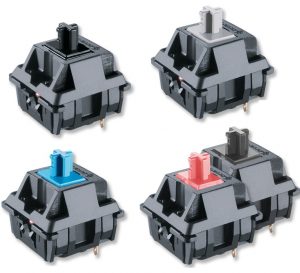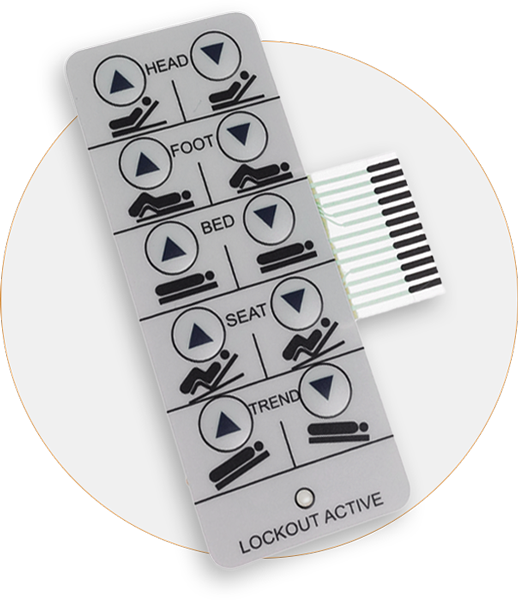Recognizing the Capability of Membrane Switches for Customer User Interface Tools
The capability of membrane switches over represents a substantial advancement in individual interface style, combining performance with aesthetic flexibility. As sectors increasingly focus on customer experience, understanding the subtleties of membrane switch modern technology becomes essential.
What Are Membrane Buttons?
Membrane buttons are cutting-edge interface gadgets that assist in customer communication with digital tools. These functional components consist of multiple layers, consisting of a visuals overlay, spacer, and a printed circuit layer. The design enables a seamless assimilation right into various electronic devices, enhancing both the visual and functional aspects of user interfaces.
Membrane switches are commonly employed in a variety of applications, from house devices to commercial equipment and medical gadgets. Their building and construction commonly features a thin profile, making them a perfect choice for portable layouts. The responsive responses given by these buttons can be engineered to fulfill particular customer choices, ensuring effective interaction between the customer and the gadget.
Resilience is an additional substantial benefit of membrane buttons, as they are resistant to dirt, wetness, and chemicals, which enhances their lifespan popular settings. Additionally, these switches can be customized in regards to shape, dimension, and visuals design, permitting branding and user-specific attributes. Generally, membrane switches stand for a useful service for boosting individual experience in digital devices, incorporating performance with aesthetic appeal in an effective way.
How Membrane Layer Changes Job
Operating on a straightforward principle, membrane layer switches over make use of a layered building and construction to sign up user input properly. Each button includes numerous layers, including a printed circuit layer, a spacer layer, and a top graphic layer, which are developed to interact seamlessly. When a user presses the leading layer, it compresses the spacer layer, bringing the conductive components of the circuit layer into call with each various other.
This contact produces a closed circuit, signaling the device to execute a specific function. The style enables various configurations, including tactile responses, which can enhance the individual experience by supplying a physical experience upon activation. The products utilized in membrane layer switches usually consist of adaptable substrates, such as polyester or polycarbonate, which guarantee resilience and strength versus wear and tear.

Key Benefits of Membrane Layer Buttons

Another substantial advantage is their compactness. Membrane buttons are thin and lightweight, which allows suppliers to save space in their devices without giving up capability. This attribute is specifically useful in applications where weight and volume are essential considerations.
Additionally, membrane switches are immune to dirt, wetness, and chemicals, boosting their toughness. This resilience prolongs their lifespan and reduces the need for constant replacements, leading to price financial savings in time.
Moreover, the tactile responses supplied by membrane buttons can be maximized to enhance individual communication. They can Recommended Reading include attributes such as increased buttons or distinct clicks, improving use and customer experience.
Applications Throughout Industries
Interface devices making use of membrane switches prevail in a wide array of industries, showcasing their adaptability and functionality. Membrane Switch. In the clinical field, membrane buttons are integral to gadgets such as diagnostic tools and person tracking systems, where their toughness and convenience of cleaning are vital for maintaining hygiene criteria. In the automotive industry, these buttons are used in control panel controls and infotainment systems, providing a smooth and modern-day interface for users.
In addition, the consumer electronics industry gain from membrane layer buttons in appliances and handheld tools, where compact design and user-friendly interfaces boost customer experience. Industrial applications additionally utilize membrane layer switches over for control board in equipment and automation systems, highlighting their toughness and resistance to severe atmospheres.
In the aerospace and defense sectors, membrane layer buttons are used in cockpit controls and equipment, where reliability and efficiency under severe conditions are paramount. Additionally, the gaming sector significantly integrates membrane buttons in controllers and game devices, contributing to an appealing individual experience. In general, the versatility of membrane layer switches over enables their widespread usage across numerous sectors, emphasizing their importance in modern customer interface style.
Future Trends in Membrane Layer Switch Innovation

Additionally, using sophisticated products, such as polycarbonate and This Site polyester films, is anticipated to rise, supplying boosted sturdiness and resistance to environmental stress factors. These materials contribute to the general long life of membrane layer buttons, making them ideal for harsher industrial applications.
Additionally, the incorporation of clever technology, including IoT connection, will certainly make it possible for membrane layer switches to communicate with various other tools and systems, facilitating a more interactive customer experience. This trend aligns with the expanding demand for wise tools throughout numerous sectors, from healthcare to consumer electronic devices.
Lastly, personalization choices are expected to broaden, permitting suppliers to develop bespoke options customized to specific user needs and choices. These growths will certainly place membrane switches as vital parts in the advancement of interface technology.
Conclusion
In verdict, membrane changes stand for an essential advancement in individual interface technology, providing a reputable and versatile solution for diverse electronic applications. As developments in look these up product scientific research and touch sensing modern technologies proceed, the performance and applicability of membrane layer buttons are anticipated to expand, strengthening their relevance in modern electronic tools.